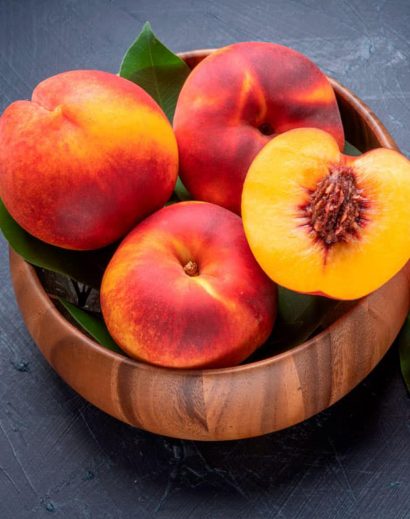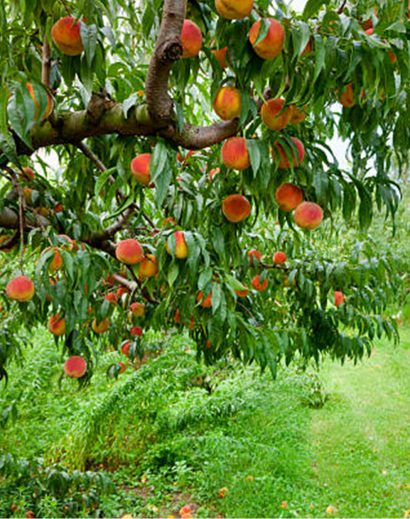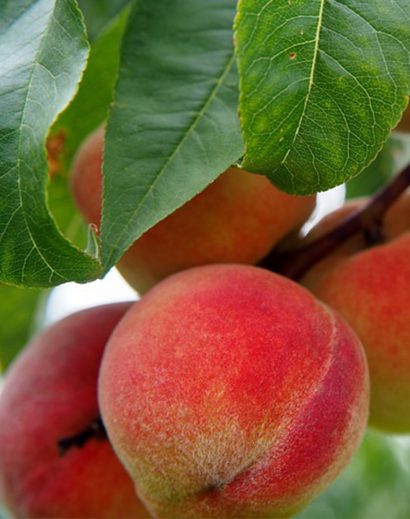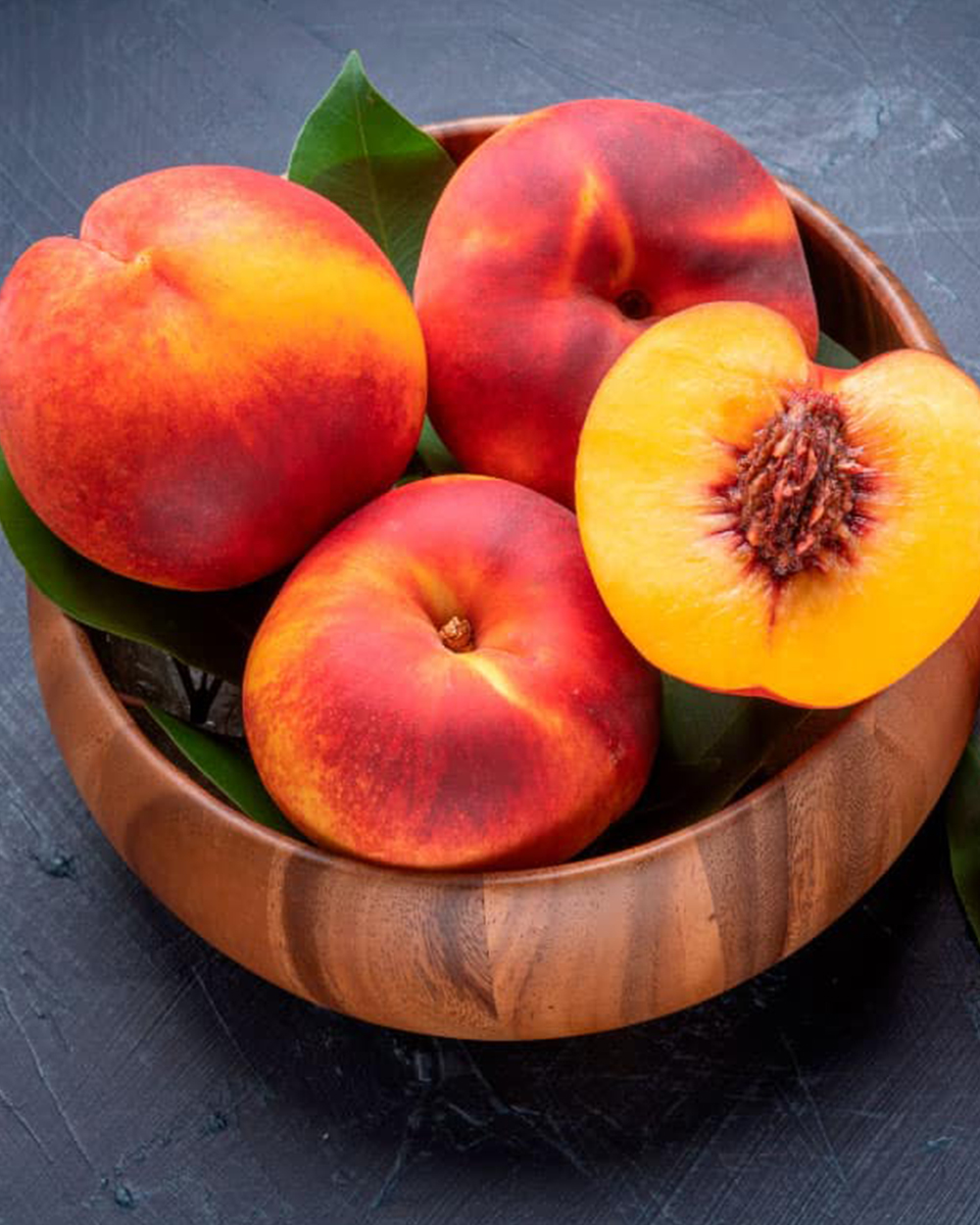Peaches are a delectable and visually appealing fruit known for their enticing combination of sweet and slightly tangy flavors. Here is a more detailed description of peaches:
Exterior:
- Size and Shape: Peaches are typically small to medium-sized fruits, roughly resembling a slightly flattened sphere.
- Skin: The skin of a peach is smooth and velvety to the touch, with a range of colors including shades of yellow, orange, and red. It can be either uniform in color or display blushes and streaks of darker hues.
- Texture: The skin is delicate and easily bruised, so handling them gently is important to avoid damage.
- Peach Fuzz: Many peaches have fine, soft hairs (peach fuzz) on their skin, which gives them their characteristic velvety texture.
Interior:
- Flesh: When you cut open a peach, you’ll find succulent, juicy, and tender flesh. The color of the flesh can range from pale yellow to deep orange, depending on the variety.
- Pit: At the center of the peach is a large, hard pit or stone, which needs to be removed before consuming the fruit. This pit can vary in size and is usually oval or almond-shaped.
- Juiciness: One of the defining features of peaches is their high water content, which makes them incredibly juicy when ripe.
- Aroma: Ripe peaches have a delightful, sweet, and fragrant aroma that is both inviting and characteristic of the fruit.
Taste:
- Flavor: The flavor of peaches is a harmonious blend of sweetness and gentle tartness. It’s often described as having a “peachy” or “summery” taste.
- Sweetness: Ripe peaches are notably sweet, and their sugar content intensifies as they ripen.
- Tanginess: The slight tanginess provides a pleasant contrast to the sweetness, creating a well-balanced taste.
Varieties:
- White Peaches: Some peaches have white or pale yellow flesh instead of the traditional orange. White peaches are typically sweeter and less acidic than their yellow-fleshed counterparts.
- Nectarines: Nectarines are very similar to peaches but have smooth, glossy skin instead of the characteristic peach fuzz. They share the same sweet and juicy qualities as peaches.
Usage:
- Peaches are enjoyed in a multitude of ways, from being eaten fresh as a refreshing snack to being used in various culinary creations, including pies, cobblers, jams, and salads.
- Their juicy nature makes them an excellent addition to fruit smoothies and desserts.
- Grilled peaches offer a caramelized and smoky flavor, while canned or preserved peaches provide a taste of summer during the off-season.
In summary, peaches are a delightful fruit that tantalizes the senses with their soft, velvety skin, juicy and sweet flesh, and a wonderful aroma. They are a beloved summer fruit and are widely celebrated for their delicious taste and versatility in the kitchen.






Reviews
There are no reviews yet.